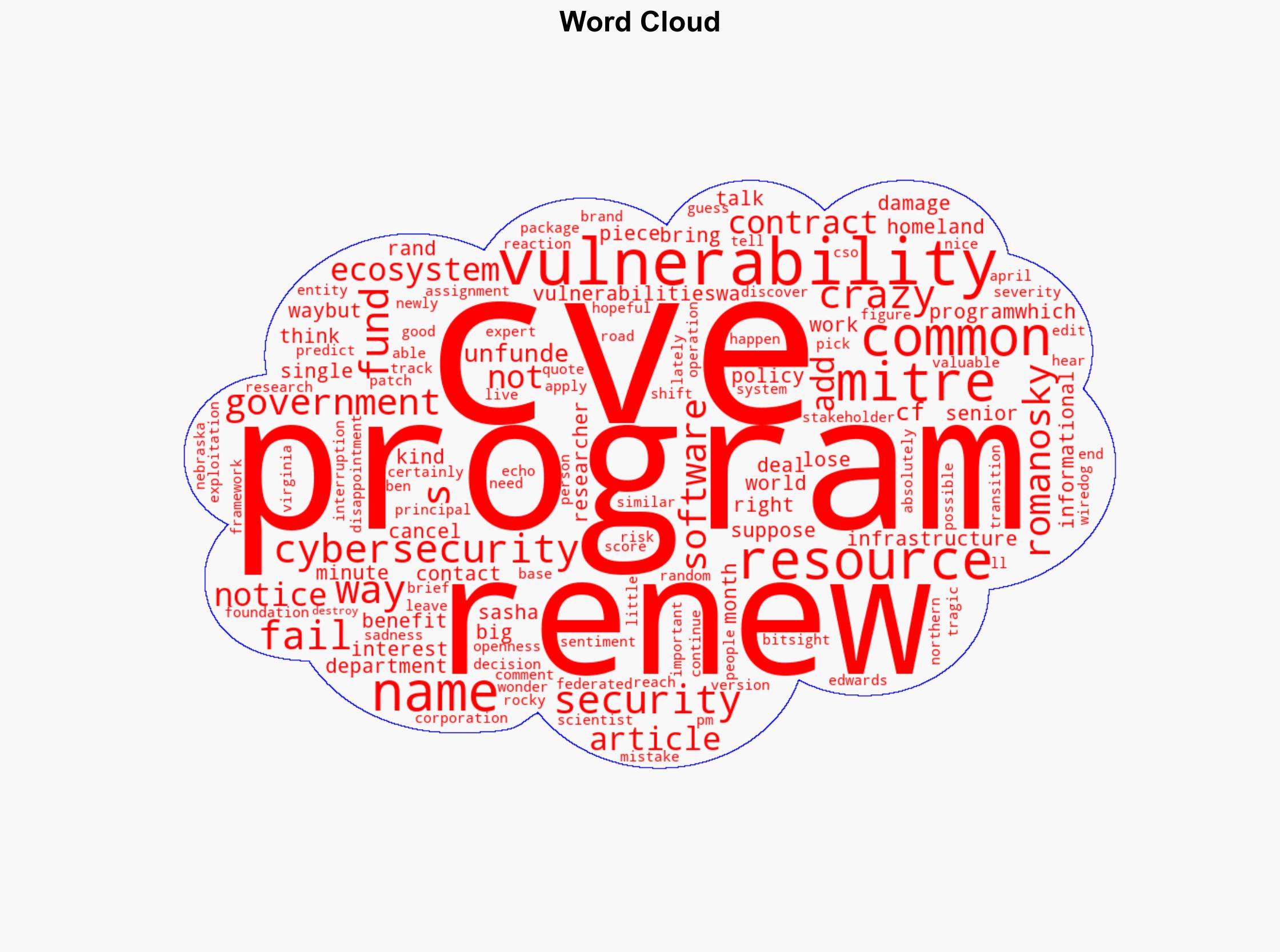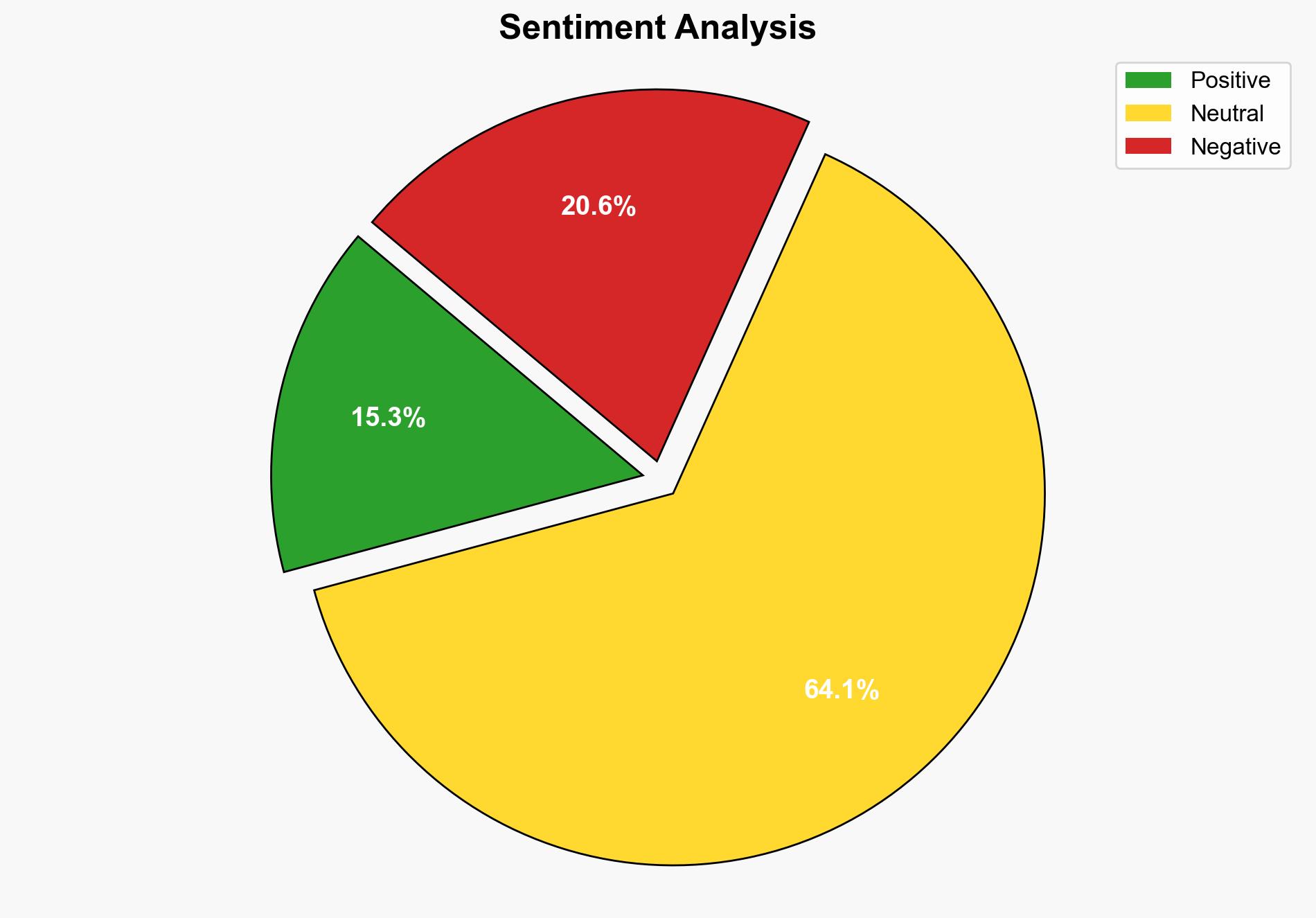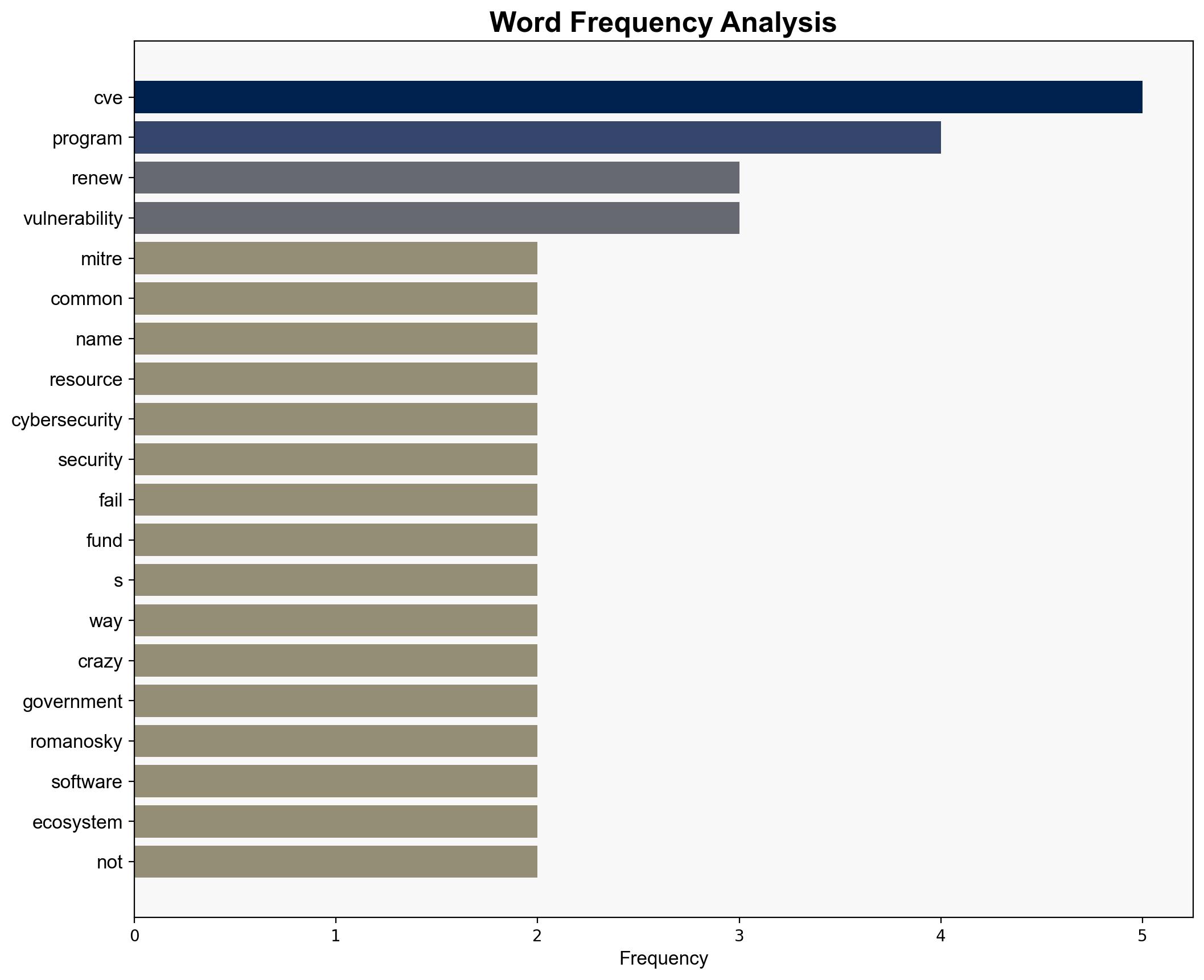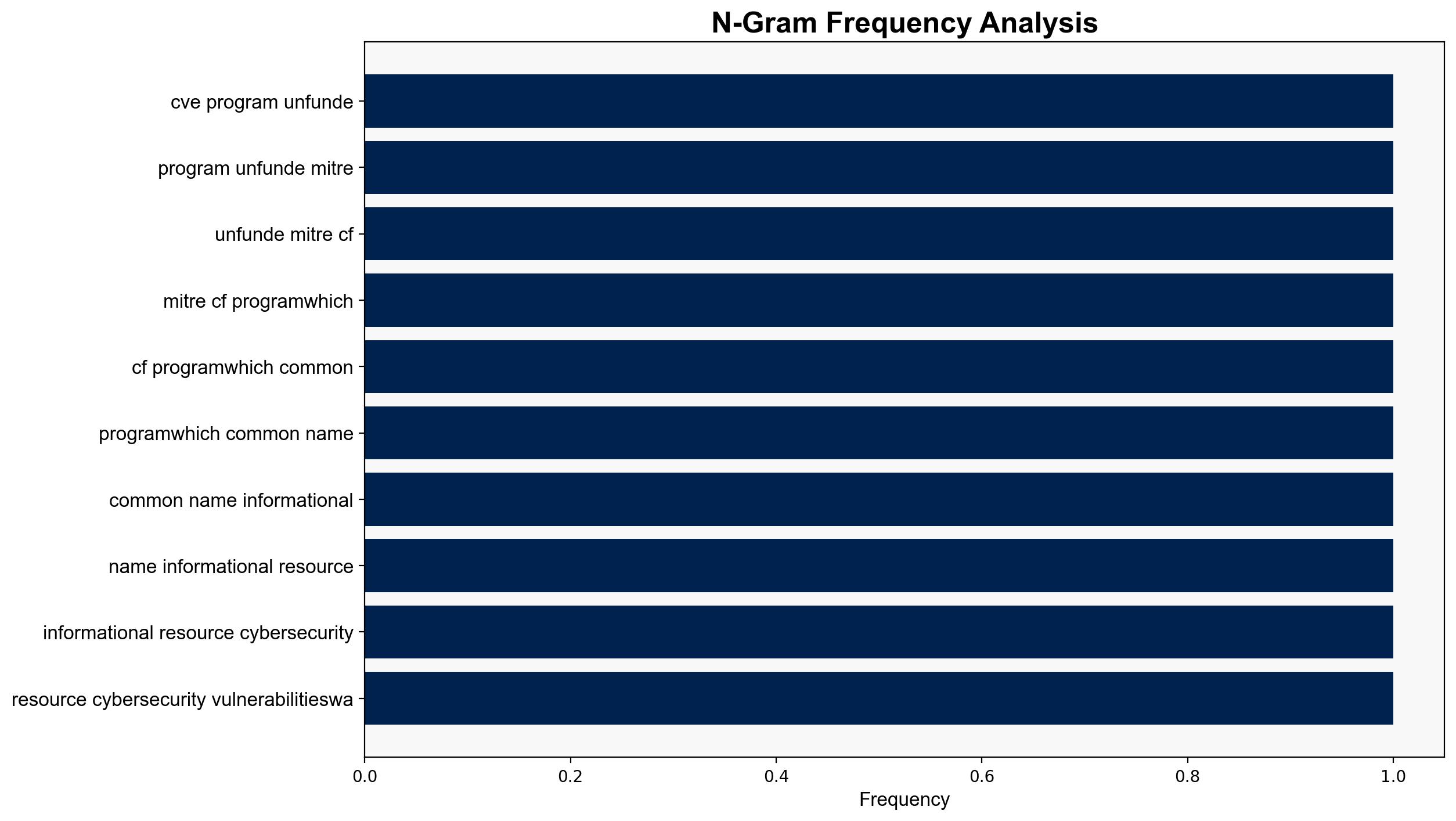CVE Program Almost Unfunded – Schneier.com
Published on: 2025-04-16
Intelligence Report: CVE Program Almost Unfunded – Schneier.com
1. BLUF (Bottom Line Up Front)
The CVE program, crucial for cybersecurity vulnerability management, faced potential defunding due to a lapse in contract renewal by the US Department of Homeland Security. Although temporarily extended for eleven months, the program’s future remains uncertain. Immediate strategic action is required to ensure continuity and prevent significant setbacks in cybersecurity infrastructure.
2. Detailed Analysis
The following structured analytic techniques have been applied:
Analysis of Competing Hypotheses (ACH)
The potential defunding of the CVE program could stem from budgetary constraints, shifting governmental priorities, or oversight. Each hypothesis suggests different motivations, from financial austerity to administrative mismanagement.
SWOT Analysis
Strengths: The CVE program is a well-established, universally recognized framework for identifying and managing software vulnerabilities.
Weaknesses: Dependency on government funding makes it vulnerable to political and budgetary changes.
Opportunities: Potential for increased collaboration with private sector stakeholders to ensure program sustainability.
Threats: Loss of the program could lead to fragmented vulnerability management, increasing cybersecurity risks globally.
Indicators Development
Indicators of emerging threats include increased cybersecurity incidents, delays in vulnerability reporting, and fragmentation in vulnerability management practices.
3. Implications and Strategic Risks
The potential discontinuation of the CVE program poses significant risks to global cybersecurity infrastructure. It could lead to inconsistent vulnerability tracking, delayed patching, and increased susceptibility to cyber attacks. Politically, it reflects a potential misalignment in prioritizing national security interests. Economically, the absence of a centralized vulnerability management system could increase costs for organizations managing cybersecurity independently.
4. Recommendations and Outlook
- Immediate engagement with private sector stakeholders to explore alternative funding models for the CVE program.
- Develop a contingency plan to transition the program to a non-governmental entity if necessary.
- Scenario-based projection: If funding lapses, anticipate a six-month period of increased cybersecurity incidents and operational disruptions.
5. Key Individuals and Entities
Sasha Romanosky, Ben Edwards.





